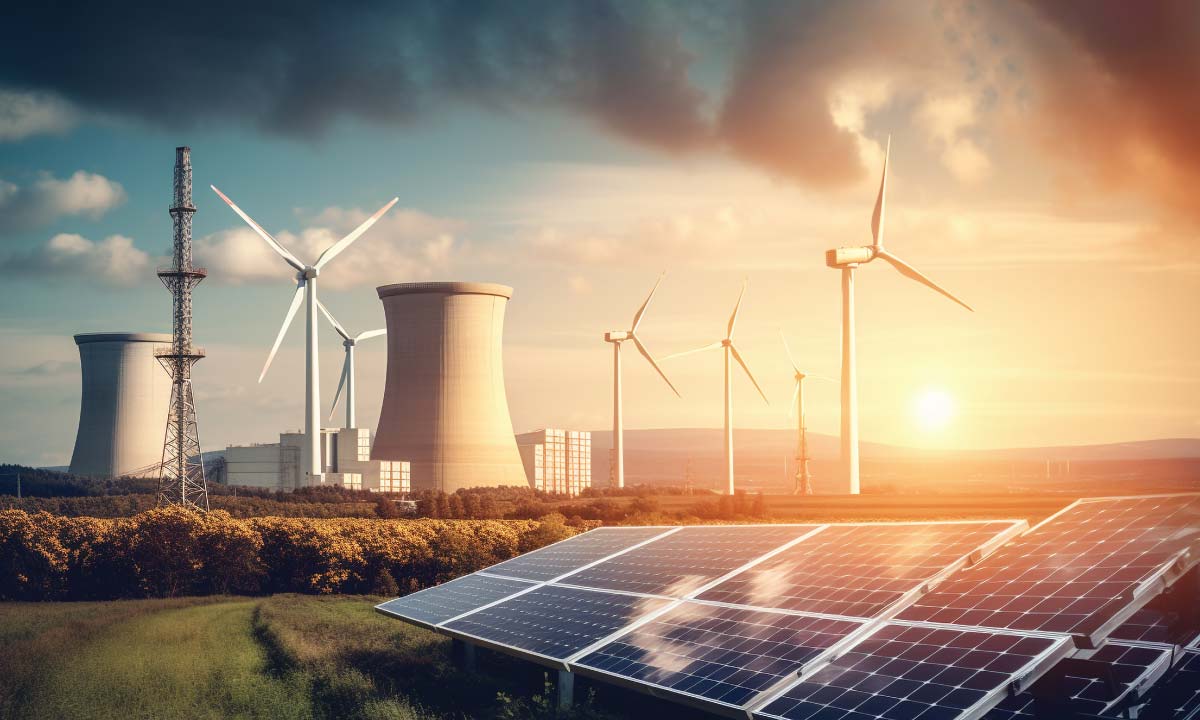The United Arab Emirates is well on its way to meeting and even exceeding its emissions target by 2030. However, it must prioritize energy efficiency and reduce reliance on oil export revenues to safeguard its economy and avoid the severe impacts of climate change as the energy transition accelerates.
This insight is derived from an independent review of the UAE’s energy transition trajectory, presented in a UAE-focused “barometer” by the U.K.’s Energy Institute on November 27, ahead of the COP28 climate summit in Dubai. Titled “Barometer 2023: The UAE in Transition,” the report reflects the perspectives of energy professionals based in the UAE across various sectors of the energy landscape.
More than 60 percent of respondents expect the UAE to meet or surpass its 2030 emission reduction target, signifying a 40 percent reduction from a business-as-usual scenario. Similarly, a comparable proportion believes that the UAE will exceed its energy diversification target by 2050, with 50 percent of total energy demand met by renewables and nuclear power.
Despite significant strides in diversifying its energy mix, there are associated risks with the transition. A majority of participants highlight the threat of climate change to the UAE’s arid semi-desert environment.
More than half of the survey respondents believe that, by 2050, the UAE will be “disproportionately adversely affected by climate change” compared to other regions globally. Key concerns include rising temperatures and shorter winters, leading to harsher working conditions. The survey conducted by the EI identifies water scarcity as a risk factor for 41 percent of respondents, while 38 percent cite climate-change-related pollution from dust and sand particles generated by vehicles and fossil fuel power stations as posing a high risk to health.
Water scarcity emerges as a prevalent concern within the broader context of climate change risks. The report underscores that per capita water consumption in the UAE is approximately 50 percent higher than the global average.
The UAE boasts the highest proportion of renewable and clean energy within the Gulf Cooperation Council, constituting 7 percent of the GCC’s total renewable energy capacity. This percentage is set to grow with the launch of operations at Abu Dhabi’s 2 gigawatts Al Dhafra solar photovoltaic facility, officially inaugurated on November 16. Billed as the “world’s largest single-site solar power plant,” Al Dhafra’s initiation aligns strategically with the UAE’s commitment to environmental sustainability, notably as it gears up to host the upcoming climate summit.
The start-up of Al Dhafra raises the UAE’s installed renewable energy capacity to 5.91 gigawatts. Of this total, Abu Dhabi accounts for 3.28 gigawatts, while Dubai’s Mohammed Bin Rashid al-Maktoum Solar Park contributes 2.63 gigawatts. Additionally, the UAE stands as the sole Arab nation with a functional nuclear power plant. The Barakah Nuclear Power Plant is poised to meet 25 percent of the UAE’s electricity demand when its fourth and final unit is operational, raising the plant’s overall capacity to 5.6 gigawatts by the end of 2024.
Crucially, the Barakah initiative will play a pivotal role in mitigating the UAE’s greenhouse gas emissions. At maximum capacity, the Barakah plant is projected to avert “22 million tons of carbon emissions every year, equivalent to removing 4.8 million cars from the roads.”
Read more: COP28: $57 bn pledges for climate, energy, food and agriculture
“The UAE is seen as well-funded to make the necessary investments in clean energy, including financing renewable energy and low carbon hydrogen, though there are calls for greater clarity around the policies, regulations and market mechanisms required,” according to the majority of participants in the survey.
However, the UAE is not entirely out of the woods when it comes to other aspects of the transition such as the nation’s high per capita energy intensity and the associated risks linked to rising temperatures.
According to the Energy Institute’s Statistical Review of World Energy 2023, Natural Gas accounted for 50 percent of primary energy consumption in the UAE in 2022, with oil making up 43 percent, mirroring the energy composition of the broader Middle East. Nuclear constituted 4 percent, coal 2 percent, and renewables 1 percent of the total energy consumption.
Respondents singled out energy efficiency “as an opportunity area that needs the most focus and investment.” This included demand management in air conditioning, water consumption and desalination and the adoption of less carbon-intensive methods in oil and gas production and utilization. Air conditioning alone contributes to about 70 percent of peak electrical load in buildings, a figure expected to rise with increasing temperatures. Proposed measures include enhancing the efficiency of buildings and implementing minimum efficiency standards.
“Despite this low contribution today, 65 percent of respondents still believe that, given the current pace of development, the goal to reach 50 percent of clean energy (nuclear and renewables) in the energy mix, as expressed in the country’s Energy Strategy 2050, will be met or exceeded by 2050,” the survey showed. Responders see “high dependence on oil and gas resources and revenues” and “lack of a clearly laid out action plan and associated regulatory frameworks” as well as the omission of so-called Scope 3 emissions from the target as the biggest barriers to achieving net zero.
The UAE stands among the world’s top 10 oil producers, and the Abu Dhabi National Oil Company is set to increase its oil production capacity from slightly over 4 million barrels per day to 5 million barrels per day by 2027. Additionally, ADNOC is investing in new gas production capacity to attain self-sufficiency by 2030. ADNOC has also set a 2030 target to eliminate methane emissions and a 2045 goal to achieve net-zero emissions.
“Beyond COP28, the UAE must continue to demonstrate leadership and influence the global energy transition. It has an opportunity to create the template of how other oil and gas producing nations fulfil their parts,” the report concluded.
The full report is available at https://www.energyinst.org/barometer/2023
For more news on sustainability, click here.








